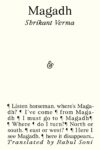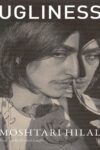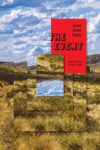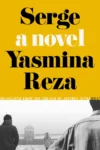
A strange, foreign-tongued girl emerges from the woods into a rural Louisiana town. An early-twenties local with a babysitting gig does her best to navigate the children’s needs while feeding her own substance addiction. Sisters navigate a mental illness never named, the town’s shining star explores the personal identity shifts that come from leavetaking and homecoming, an army brat grows up and reckons with the fallout from her itinerant childhood.
The way the stories in Laura Venita Green’s debut novel Sister Creatures intersect and emerge constantly defies expectations. The book explores the surprising ways these characters’ lives unfold and span the globe over several decades. It’s an incredibly ambitious novel, subverting genre expectations to carve a niche of its own, and I think that’s why it’s still on my mind, long after I finished reading.
I spoke with Green about literature in translation, explosive female friendships, and exploring the undefinable/space-between.
Eva Dunsky: Tell me about the genesis of this book. What came first? How did the seed of the idea take root?
Laura Venita Green: It started as five individual stories centered around Lainey, Tess, Gail, Olivia, and Thea, and I didn’t write the book chronologically. In the second semester of my MFA at Columbia, I took a class on linked story collections, which was fantastic and is one of the main reasons I have a book right now. I’d been trying to write a book-length project for years—neither pantsing nor outlining worked for me—and that class had me analyze books like Jennifer Egan’s A Visit From The Goon Squad and Toni Cade Bambara’s Gorilla, My Love. I learned how they were made, and a few served as examples of books where some of the chapters are revealed to be written or imagined by one of the characters, which is the case for Tess in Sister Creatures. Our final project was to turn in a book proposal, and I had these five puzzle pieces. They’re all related in my mind somehow, so my goal was figuring out how they tie together.
Can you tell me about how Gail’s character was born? She’s so unique.
Have you ever been infected by a word? I have a memory of a German poet—and I haven’t been able to find this poem—but my memory of the translation is that it included the word “sistercreature.” That word made me think about the concept of doppelgangers. Gail came out of my attempt at writing a doppelganger story, and from there I had to figure out who she was. At the beginning of Sister Creatures, Gail lives off-grid, out in the woods with her religious zealot family in a way that generates a lot of speculation, gossip, and judgement in their small town. The way her story (how no one really knows the truth) infects the other characters’ lives is as important to the book as her individual journey.
Did you map out the relationship between stories intentionally before writing? Or was it superimposed after you had solid drafts?
I had touchpoints for these characters—the five individual stories—and then with each one, I either moved forward or backward in time to write an accompanying chapter. I first wrote about Olivia, for example, as a high school senior falling for an older coworker, and then her second chapter took place years later with her on a cross-country bike ride. This strategy of going back and forth between chapters, layering in more precise details as I got to know the characters better, turned out to be a great revision method. Then it all came together when I decided to put Tess, Gail, and Thea—characters I already had later-in-life stories for—in a room together. That meeting became the novel’s first chapter.
In the final version, each character arc includes two chronological touchpoints.
That was actually the case when I put my proposal together in my MFA class. It wasn’t an outline, but more of a fill-in-the-blanks project or puzzle to complete. I have a math brain, and it’s really fun to see how things relate and inform each other. Only two big things changed in the editing process with Unnamed Press: we cut a storyline that wasn’t fitting, and I wrote a more complete ending for Olivia’s story, returning for one brief moment to Pinecreek, Louisiana, where the first third of the book is set.
From my readerly perspective, it felt like Thea was a personification of the presence linking these women, but that’s just my interpretation. I want to hear from you how the surreal, or supra-real, or supernatural (however you want to define it) figures into the book. Did you think of Thea serving a specific purpose in the narrative?
I describe Thea as a supernatural entity that looms over these women’s lives, showing up in various forms throughout and haunting the entire novel. For me, she began as a way to write speculative fiction in a mostly realist novel. Originally, I wanted to have Tess creating or imagining the stories, but in writing those portions, Thea became a bigger character than I was anticipating. Tess couldn’t control her, and the character started to surprise me. She felt a bit like the creative process in general—you create these people and they live their entire lives outside of you. My characters, Thea included, feel as real as most people in my life.
I also took a class on horror writing, and while I don’t think this is a horror novel, it is written by a horror fan. Many of the books in the class favored ambiguity, like Rachel Ingalls’s Mrs. Caliban, and often class discussions involved heated conversations about how certain elements of the book had been perceived. People’s minds were blown when others interpreted the text so differently, which I liked. My hope with Thea’s character is that people bring their own interpretation, and I don’t think my answer is any more “correct” than a reader’s.
So you think of horror as a useful container for the ambiguity you’re looking to create?
I do. But I also don’t write with a ton of intention around genre, so getting my book out to strangers and having it reflected back to me has been interesting. Gothic or southern gothic are the labels being affixed to it, which is great, but it’s not necessarily what I intended.
The uncanniness of horror is exactly that line between real and unreal, and the fear that comes from not being able to determine the difference. Which is a through line of this book.
Yes, and one that came about when Thea’s character began to surprise me.
Can you tell me how you thought about the line between close and too-close, or cloying, female friendships in this book? It’s another great ambiguity that’s up to the reader to parse, and I’m wondering if you consciously set out to explore it or if it emerged more organically as you wrote these complex characters.
I’ve always described the book as exploring female relationships and power dynamics. For me, female friendships have been the most intense relationships of my life. I lost a friendship with someone who, when I was younger, I felt was closer to me than a sister, which affected my life a lot. This novel was also largely written during the pandemic, when I was isolated and enraged by the overturning of Roe v. Wade, which I felt differently about than certain other women close to me. I didn’t feel like there was a shared understanding between us, which informed a lot of the last part of the book, even if it doesn’t come through directly—especially the ‘will they or won’t they’ mother/daughter dynamic where they Tess and Summer negotiate whether they’ll be able to maintain a relationship or not.
Every relationship in this book is informed by so much passion, desire, and complexity, and I really gravitate toward books like yours that don’t simplify, analyze, or even explain, but rather let the reader navigate on their own and reach their own conclusions. This was a breath of fresh air.
When I reread the book, it felt true to each character and true to me, so if it finds a reader that doesn’t connect to it, that’s their relationship to the book and that’s fine. I am thrilled that Sister Creatures is out in the world, finding its people.
This novel subverts a lot of convention: genre convention, plot expectation, character cliché…it’s truly one of a kind. I was hoping you could tell me more about your revision process, and which texts were influential to you. Were you writing within and/or against any particular literary traditions?
I studied translation in graduate school and took a class on Women of the World, which introduced me to a lot more authors in translation. There were so many books I loved that felt too dream-like, or too melodramatic, or whatever else I hadn’t been accustomed to as a North American reader. I felt so inspired by these authors, who were using speculative elements to tell these very human stories. I’m thinking of authors like Samanta Schewblin, Marie N’Diaye, Bora Chung, Agustina Bazterrica, and Irene Solà, or English-language authors like Helen Phillips, Kelly Link, and Karen Russell. Reading these books gave me permission to write something that’s hard to define.
Eva Dunsky is a writer, teacher, and translator. She has been named a semifinalist for the American Short(er) Fiction Contest and the Driftwood Story Prize, was nominated for the PEN/Dau Short Story Prize for Emerging Writers, and has received grants from Institut Ramon Llull and Columbia University to fund her translations. She teaches first-year Writing and Literature courses at School of Visual Arts and Baruch College, and is at work on her first novel.
This post may contain affiliate links.






